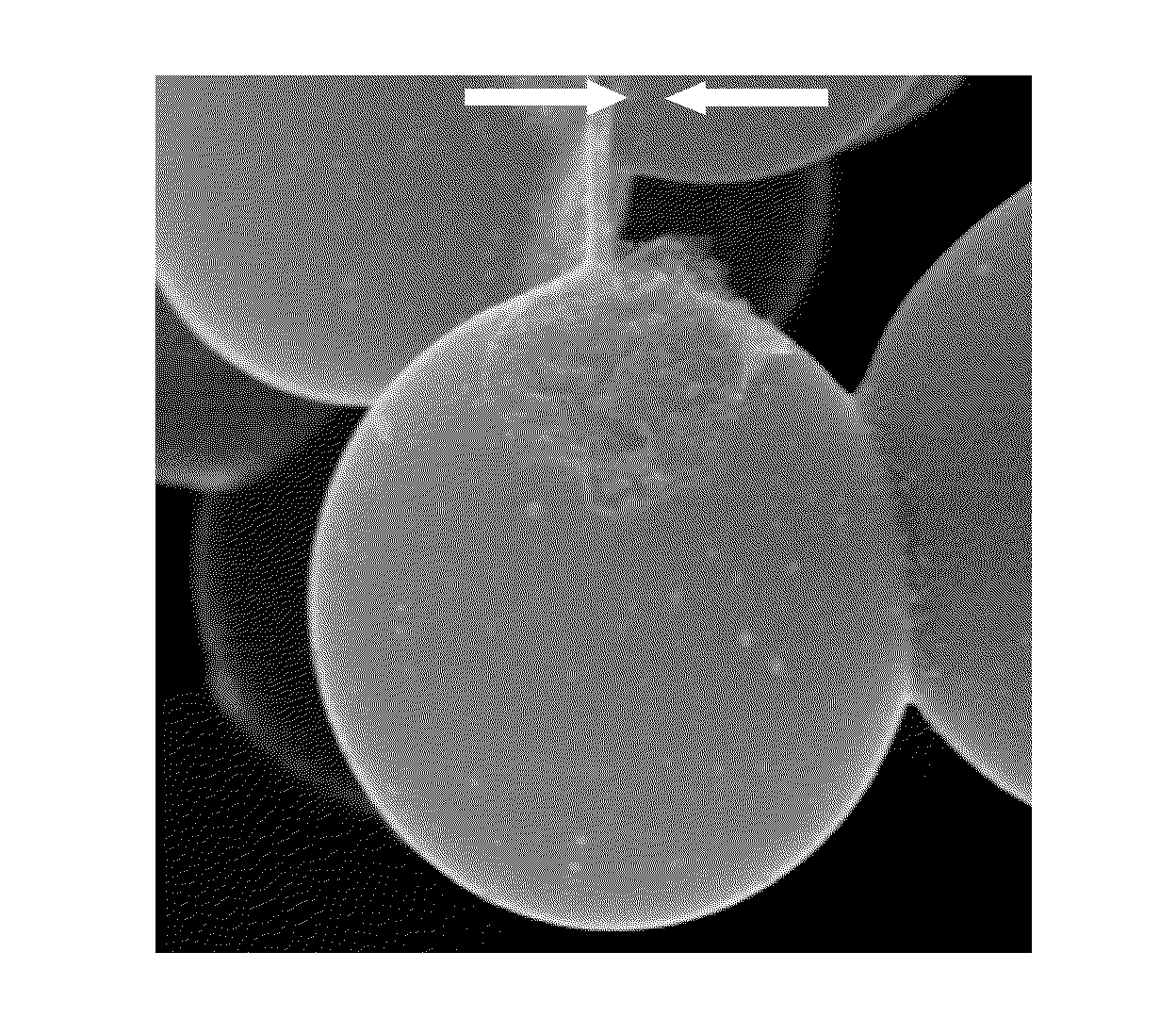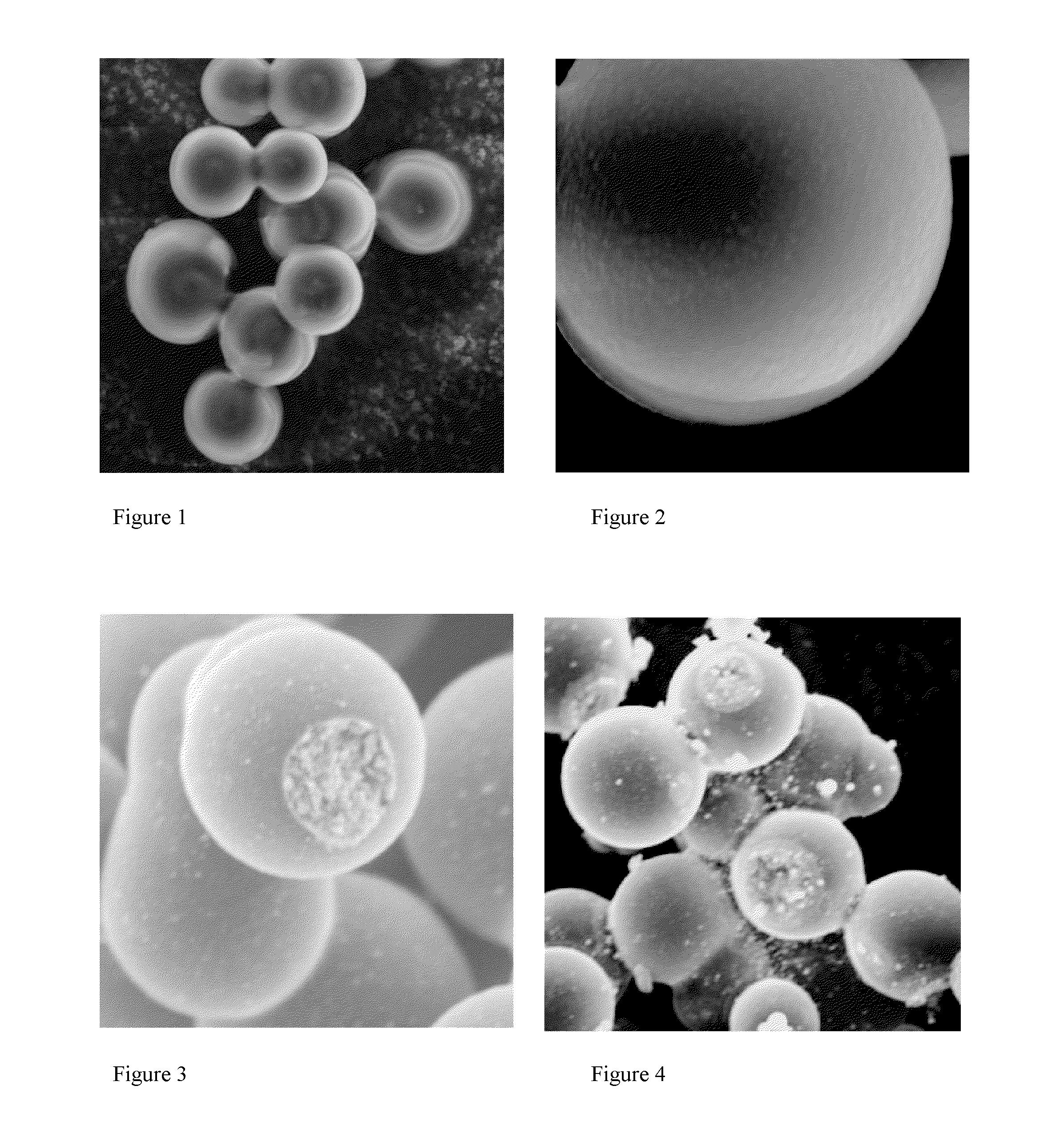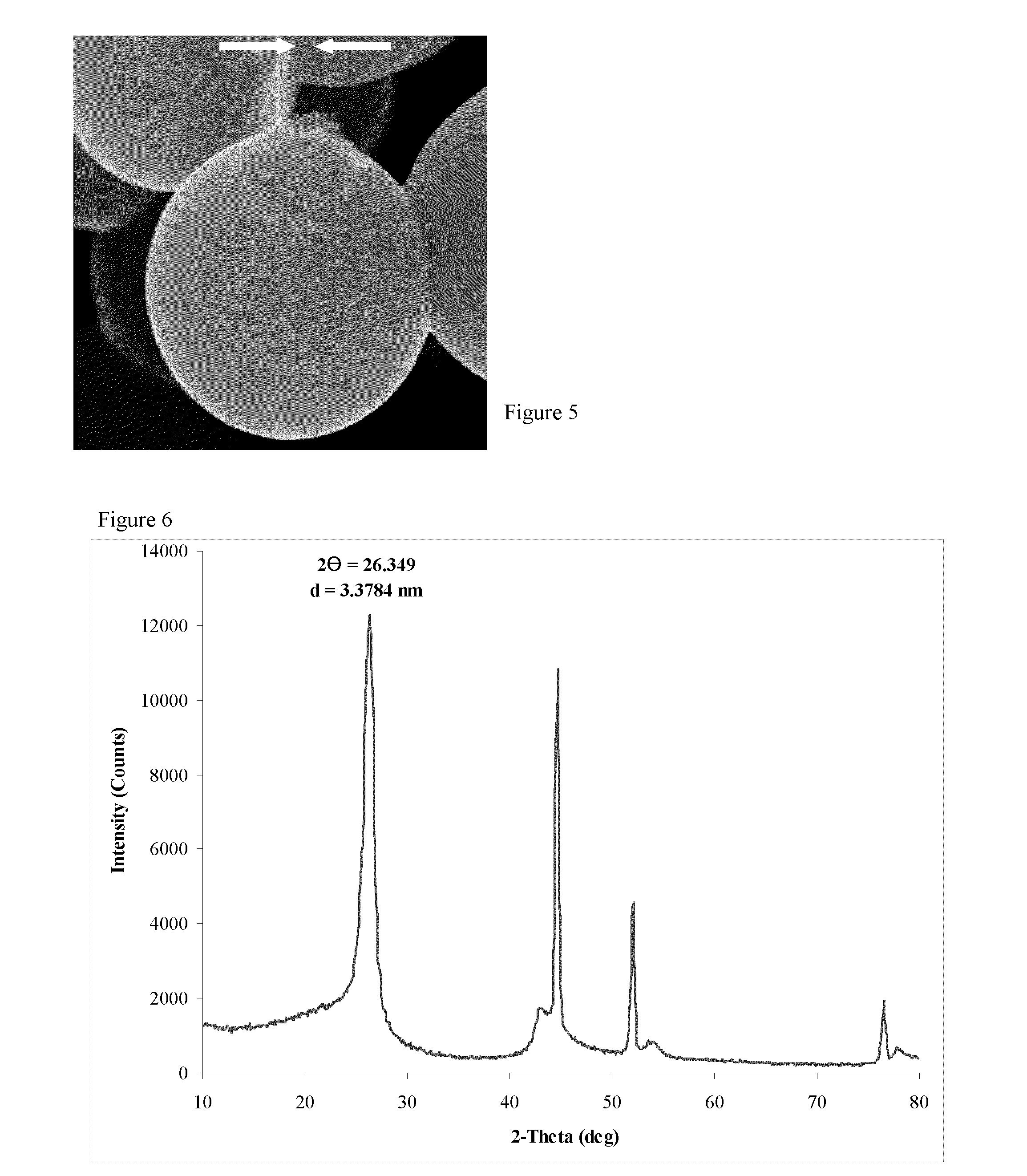Carbon Microbeads with Hierarchical Structure
a technology of carbon microbeads and hierarchical structures, applied in the field of carbon microbeads, can solve the problems of prone to deterioration low application performance of graphitic carbon microbeads made by high temperature treatment (htt) of mcmbs, and low cost, and achieve the effect of simple and inexpensiv
- Summary
- Abstract
- Description
- Claims
- Application Information
AI Technical Summary
Benefits of technology
Problems solved by technology
Method used
Image
Examples
example 1
[0074]A 50 mL beaker was charged with 1.40 g corn starch (Argo), 0.50 g Ni(NO3)2.6H2O and 20 mL of room-temperature deionized water. The mixture was heated on a hot plate while stirring with a glass stir rod until a viscous gel formed. 13.03 grams of this gel was transferred to a PTFE cup (23 mL capacity), which was then sealed into a pressure vessel (Parr model 4749), which was then placed in a 200° C. oven. After three days in the oven, the pressure vessel was removed and allowed to cool naturally to below 100° C. The vessel was opened revealing a yellowish liquid and dark (brown-black) solid residues. The liquid was decanted, and the solids were washed with a small amount of deionized water. Residual water was removed by heating the sample at 60° C. in a vacuum oven. The isolated yield of the product was 0.26 grams (Product CS / Ni-HT)
[0075]Examination of this product using scanning electron microscopy (SEM) revealed microspheres that were typically 5-25μ in size, and which had an ...
examples 2-6
[0077]The process described in Example 1 was repeated, except that other polysaccharides or sugar were substituted for corn starch. Except for microbead size and polydipersity, the products were generally similar to CS / Ni-HT. Table 1 gives a summary of starting materials used and relative particle size and polydispersity:
TABLE 1ExampleStarting materialSample IDSize and polydispersity relative to CS-HTExample 1Corn strachCS / Ni-HT—Example 2Wheat starchWS / Ni-HTAbout the same size and polydispersity.Example 3SucroseSC / Ni-HTAbout the same size and polydispersity.Example 4DextranDT / Ni-HTAbout the same size; slightly higher polydispersity.Example 5Rice starchRS / Ni-HTSmaller microbeads; about the same polydispersity.Example 6Potato starchPS / Ni-HTMicrobeads generally smaller, high polydisperisty.
example 7
[0078]An alumina boat was charged with 0.2553 grams of the product made in Example 1 (CS / Ni-HT). The boat containing the sample placed in a tube furnace, which was purged with dry Ar. The sample was heated, under flowing Ar, at a rate of 10° C. / min to 850° C., and held at that temperature for 4 hours. The sample was then allowed to cool naturally to room temperature, and was then removed from the furnace. The yield of the product (CS / Ni-HT-85) was 0.1418 grams (44.5% weight loss).
[0079]Examination of the product by SEM revealed that the product contained microbeads that were ca. 5-25μ in size, and which were covered with a relatively smooth coating that was open in one or (at most) a few places (FIGS. 3 and 4). These openings revealed that the microbeads had a core / shell microstructure, that the core had a nanostructure corresponding to a non-laminar aggregated of platelet like nanoparticles, and that the shell was relatively thin. We noted that, in some cases, a portion of the shel...
PUM
| Property | Measurement | Unit |
|---|---|---|
| diameter | aaaaa | aaaaa |
| diameter | aaaaa | aaaaa |
| degree of crystallinity | aaaaa | aaaaa |
Abstract
Description
Claims
Application Information
 Login to View More
Login to View More - R&D
- Intellectual Property
- Life Sciences
- Materials
- Tech Scout
- Unparalleled Data Quality
- Higher Quality Content
- 60% Fewer Hallucinations
Browse by: Latest US Patents, China's latest patents, Technical Efficacy Thesaurus, Application Domain, Technology Topic, Popular Technical Reports.
© 2025 PatSnap. All rights reserved.Legal|Privacy policy|Modern Slavery Act Transparency Statement|Sitemap|About US| Contact US: help@patsnap.com



